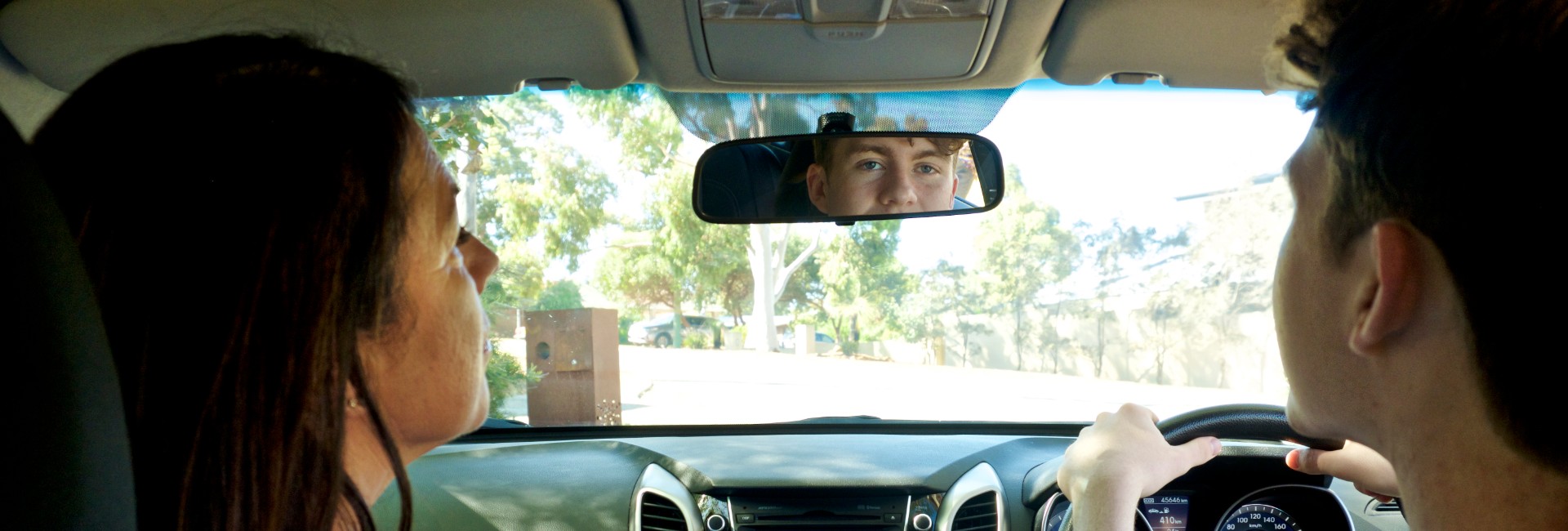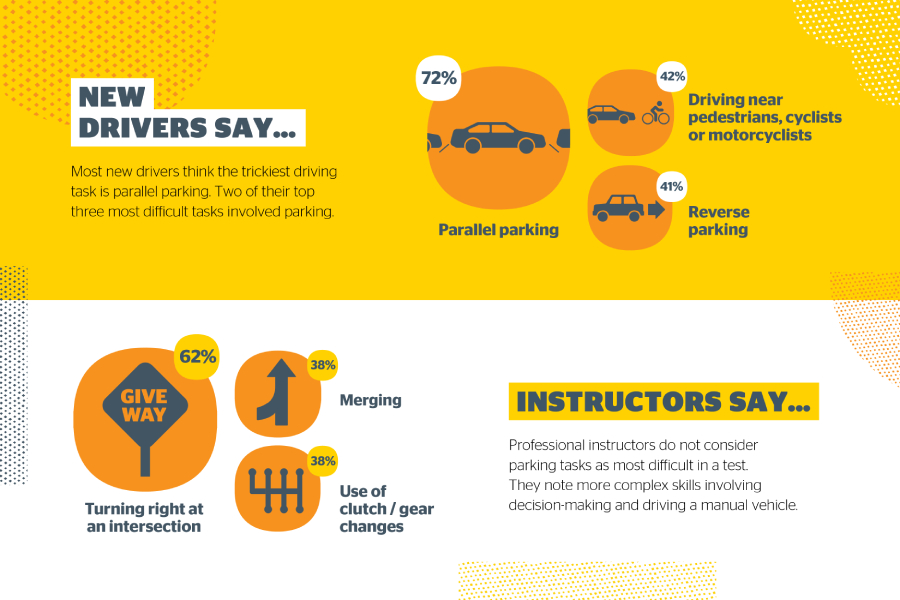
The hardest parts of a driving test to master
We’ve surveyed a bunch of new drivers and their instructors to find out which driving tasks were hardest to master.
The results are in and it turns out your “I’ve got this” is likely to be your instructor’s “let’s try that again”.
What are your chances?
In FY24, almost two-thirds (61%) of new drivers needed two or more tries to pass their driving test, and a massive 83% reckon they failed because they were nervous. So, how can you make sure you avoid the most common mistakes?
The key is practice. The more experience you get behind the wheel, the better you’ll become at handling those tricky driving tasks that often trip up learners. Based on our survey insights of new drivers and driving instructors, here’s a look at some of the hardest parts of the practical driving test. Plus, tips on how to conquer them.
Driver licensing survey (PDF 791KB)

What new drivers think
It turns out most new drivers think the trickiest driving task is... parallel parking. In fact, two of the top three most difficult tasks to master involved parking:
- Parallel Parking (72%)
- Driving near pedestrians, cyclists and motorcyclists (42%)
- Reverse Parking (41%)
What driving instructors think
Interestingly, professional instructors don’t rank parking as highly as you might expect. Instead, they focus on the more complex skills that require decision-making and operating a manual vehicle. Their top three:
- Turning right at a priority/give way intersection (62%)
- Merging (38%)
- Use of clutch and gear changes (38%)
Experience helps you develop your skills
Getting your supervised driving hours up is crucial. The more time you spend on the road — especially in varied conditions like rain or night driving — the better prepared you’ll be for your test and beyond. In fact, research suggests that between 100 and 120 supervised hours is ideal for reducing crash risk and improving your chances of passing the test first time.
When it came to our survey, new drivers that had completed more than the minimum number of practise hours before undertaking their first test were significantly more likely to report feeling very or extremely well-prepared and were also more likely to have passed the test first time around.
Most common mistakes to avoid during your practical driving test
Now, let’s break down some of the most common mistakes assessors see during the practical driving assessment and what you can do to avoid them.
Speeding
One of the most common errors is speeding. Many learners struggle to stay within the speed limit, often because they’re nervous or distracted. To avoid this mistake, be sure to familiarise yourself with the speed limits on the roads you’ll be driving. In built-up areas, the limit is usually 50 km/h and always keep an eye on your speedometer.
Not stopping completely at a stop sign
Another common pitfall is not coming to a full stop at stop signs or stopping too far back. This is often caused by the temptation to check for oncoming traffic before you’ve come to a complete stop. To avoid this, focus on stopping fully at the stop line before scanning for other vehicles. This will ensure you don’t lose points for improper stopping.
Blind spot and mirror checks
It’s easy to forget to check your mirrors or blind spots, especially when you’re changing lanes or preparing to turn. However, these checks are crucial for safe driving and are heavily scrutinised during the PDA. Always check your blind spots and mirrors before making any lane changes or turns.
Understanding road signs and markings
Misunderstanding road signs and markings is another common mistake. While these are tested in the Learner’s Permit (CTT) exam, it’s in the practical test that you’ll need to apply that knowledge. Understanding your obligations when approaching roundabouts, right-hand turns at traffic lights without arrows, and merging lanes are a few examples of areas that can cause confusion.
Want to know more?
To help you prepare, we’ve teamed up with Will, an Assessor, from the Department of Transport and Major Infrastructure to break down some of the key moves you’ll want to master.
Read more of our learning to drive articles.
